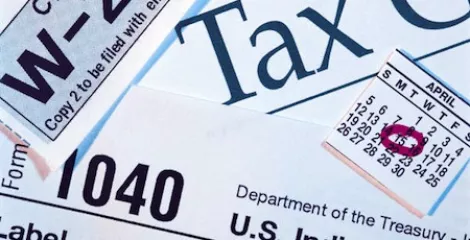- | Government Spending Government Spending
- | Expert Commentary Expert Commentary
- |
What John Oliver Gets Right (and Wrong) about Tax Reform
Last weekend, John Oliver tackled the subject of federal tax reform on Last Week Tonight. It was an unusually interesting episode. If you watch it carefully, you can see that Oliver does a reasonably good job walking the fine line between engaging his left-leaning audience with hyperbolic jokes that appeal to their general dislike of big corporations, while at the same time displaying intellectual honesty by acknowledging that reducing the corporate income tax rate was arguably a step in the right direction, even if last December’s Tax Cuts and Jobs Act didn’t include other important reforms.
What John Oliver Gets Right: Tax Reform Was Needed, and Trump’s Jobs Claims are Mostly Vacuous
Most of Oliver’s commentary revolves around the lengths that businesses—especially large, international corporations—go to minimize their tax burden. He notes several examples of companies using allowances in tax law (what most people call loopholes) to lower their tax bill, highlighting an Institute on Taxation and Economic Policy report that found that General Electric, along with 17 other corporations, paid no federal taxes between 2008 and 2015.
Oliver spends much of the segment describing how corporations avoid taxes by shifting their assets to offshore holdings. Unfortunately, he glosses over the fact that the movement of assets into tax shelters is obviously driven by the otherwise higher taxes the corporations would have to pay. Furthermore, he fails to address the fact that we should expect this behavior, because it’s exactly what most people do when filing their taxes. Using Oliver’s logic you could make the argument that contributing to a tax-deferred IRA account is “future-shoring” your income as part of your own nefarious tax-avoidance scheme. Avoiding unnecessary costs isn’t reprehensible—it’s smart, or at the very least economically rational.
Still, Oliver’s argument builds to the overall point that the complexity of the tax code is the real problem, and he rightfully argues that the Tax Cuts and Jobs Act missed important opportunities to close loopholes and end allowances. The best way to close loopholes is to make the tax code simpler—although I’m not sure that Oliver realizes that he’s implicitly making an argument for a flat tax—because when there are no special considerations, there can be no loopholes. But one exemption begets another exemption until you arrive at a worse situation than where you started—my colleague Jason Fichtner explains that this is exactly what happened to the 1986 tax reform.
I’ve similarly argued that Congress missed making some important changes that could have ended the unintended federal subsidies for professional sports stadiums. Furthermore, I agree with Oliver that the Trump administration’s triumphant claims of job growth already resulting from tax reform are, for the most part, political grandstanding.
What John Oliver Gets Wrong: Stock Buybacks
However, Oliver and many pundits fundamentally misunderstand another commonly criticized aspect of tax reform: corporate stock buybacks. A large amount of the estimated $2.6 trillion-3.1 trillion in overseas corporate assets is likely to be repatriated, especially since the Tax Cuts and Jobs Act taxes those assets regardless of whether they are actually brought back. One survey by Morgan Stanley anticipates that 43 percent of repatriated funds will be used for stock buybacks or dividends, while another Morgan Stanley report suggests that stock buybacks will exceed $800 billion this year, with $200 billion coming from repatriations and another $100 billion attributable to the decrease in corporate taxes.
But Oliver makes the same mistake as other pundits (as well as some economists) by exclusively focusing on the direct beneficiaries of tax reform. He highlights a 2011 report by the US Senate Permanent Subcommittee on Investigations, which found that aggregate employment among the 15 companies with the highest asset repatriations from the 2004 tax holiday created by the American Jobs Creation Act did not increase after the repatriation. The report found that instead a substantial portion of the repatriated funds were used for stock buybacks.
But the report’s conclusion that “corporations essentially distributed a portion of the repatriated offshore funds to their shareholders…making the repatriated cash unavailable for use in domestic job growth, R&D efforts, or other investments” (emphasis mine) is wrong.
A stock buyback doesn’t cause the repatriated funds to magically disappear. Rather, those funds change hands to other investors who will likely search out new and more profitable investment opportunities. In turn, we shouldn’t necessarily expect companies engaging in stock buybacks to increase employment—because instead they’re using the tax reform savings to reconsolidate their business structure in order to be more efficient and profitable going forward. In short, many people are looking for growth in the wrong place—in economics as well as politics, we need to “follow the money.”
This is why the argument that stock buybacks don’t create jobs is the very definition of short-sighted. Both Tyler Cowen and John Cochrane (the “Grumpy Economist”) suggest that instead we should be following the flow of money through the economy.
When investors agree to sell back stocks to the issuing corporation, they’re effectively saying that they’ve seen a better use for the money elsewhere, which is often another investment opportunity. So stock buybacks have the immediate effect of increasing the availability of investment capital for other companies. It is in those companies where we will see the near-term economic expansion and increased employment that comes from federal tax reform.
At the same time, stock buybacks generally indicate that the corporation’s management believes that its stock is currently undervalued by investors. The stock buyback is equivalent to the company “investing in itself” which then frees up the company to re-issue that stock to fund business growth at a later date. It’s similar to putting the money in a savings account, albeit in itself rather than a bank. This then helps enable future economic growth.
Noted economist Israel Kirzner would argue that both the investors selling the stock and the corporation buying it back from them are serving as entrepreneurs: They’re redirecting the economy’s assets from what they believe to be lower-productivity uses to higher-productivity uses. This process of discovering the best use of resources is the exact function that leads to long-run economic growth, because it enables the creative destruction that leads to new and better ways of production.
Lastly, at a broader level stock buybacks increase returns for the investors who didn’t sell their stocks. These increased returns will be broadly beneficial to the future economy and social stability, since $28 trillion of the combined $70 trillion invested in US stock and bond markets is held by retirement-dedicated funds. This helps not only private retirement accounts held by individuals ($16.6 trillion in IRAs and defined contribution plans), but also the $6 trillion held by public pensions. And since many public pensions are approaching insolvency, as research by my colleague Eileen Norcross shows, they can use all the help they can get.
All of this reinforces one of Frederic Bastiat’s most memorable quotes:
“There is only one difference between a bad economist and a good one: the bad economist confines himself to the visible effect; the good economist takes into account both the effect that can be seen and those effects that must be foreseen.”
Conclusion
Those who argue that tax reform won’t lead to economic growth (and the jobs that come with it) are either short-sighted or have a political axe to grind. If just half the value of overseas assets is repatriated it will exceed the combined value of the 2008 and 2009 stimulus packages under former Presidents Bush and Obama, ($192 billion and $961 billion, inflation-adjusted to March 2018, respectively). And rather than the investments being directed by crony politicians focused on using them to win re-election, the new investments created by tax reform will be directed by entrepreneurs seeking the highest return. In other words, this kind of stimulus will be much more effective, because the incentives of the investors are aligned with real economic growth, rather than favoring projects that score political points with voters or campaign donors.
In conclusion, John Oliver’s final point is his most important one: tax reform is not done. There’s still a lot of favoritism built into our tax code, and that favoritism implicitly helped the largest corporations avoid paying taxes, while smaller companies with less capacity shared a larger part of the burden. The next steps forward should fix the ways that tax law creates government-granted privilege.
(For more reading, see this article where Veronique de Rugy and Jason Fichtner join me in digging more deeply into how federal tax reform will be beneficial to the US economy. And in this book, Jason provides a framework for policymakers on how to evaluate the social benefits of successful tax policy.)

